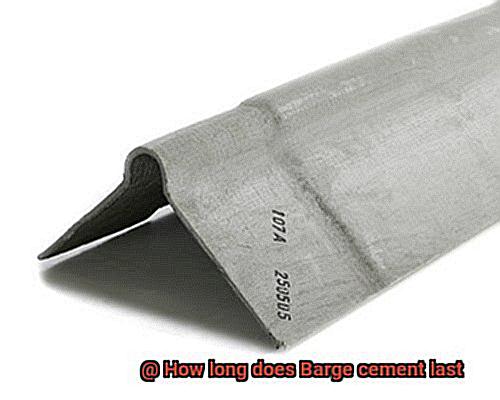Imagine this: you’ve skillfully patched up a worn-out shoe sole or fixed a tear in your favorite leather bag using the legendary Barge cement—a glue known for its unbeatable bonding power. But now, as you proudly admire your handiwork, a nagging question pops into your head—how long will this bond hold?
Today, we’re delving deep into the world of Barge cement to uncover the secrets behind its durability and staying power. In this blog post, we’ll explore all the factors that contribute to how long Barge cement can last, giving you the knowledge you need to make informed decisions about your repair projects.
Now, adhesive longevity can be influenced by a bunch of different things. But let me assure you, Barge cement is built to go the distance. So whether you’re fixing something essential or embarking on a creative project, knowing how long this incredible adhesive can hold up will definitely come in handy.
So, grab your trusty toolset and get ready for an adhesive adventure like no other.
Factors That Affect the Lifespan of Barge Cement
Contents
Barge cement is a versatile adhesive that finds its application in various industries, from shoe-making to leatherwork, upholstery, and crafts. To ensure the longevity of your projects, it is essential to understand the factors that impact the lifespan of Barge cement. In this guide, we will explore these factors and provide practical tips for maximizing the effectiveness and durability of your bonds.
Storage Conditions:
Proper storage is key to preserving the quality of Barge cement. Store it in a cool, dry place away from direct sunlight and extreme temperatures. This helps prevent degradation and maintains its adhesive properties. Remember to tightly seal the container to minimize evaporation and drying out.
Quality of Ingredients:
Using high-quality Barge cement ensures a stronger bond and longer lifespan. Inferior ingredients may compromise bonding strength, leading to reduced durability. Choose reputable brands that prioritize ingredient quality.
Application Technique:
Applying Barge cement correctly significantly impacts its lifespan. Follow the manufacturer’s instructions carefully, ensuring an even layer of glue on both surfaces. Allow sufficient drying time for optimal bonding strength. Avoid using too much or too little glue as it may compromise adhesion.
Surface Preparation:
Proper surface preparation is crucial for a long-lasting bond. Clean the surfaces thoroughly, removing any dirt, oils, or contaminants that may hinder bonding. Smooth out rough or uneven surfaces for better adhesion.
Usage Environment:
Consider the environment in which Barge cement will be used. Extreme conditions like high humidity or constant exposure to water can weaken the bond over time. Additionally, exposure to chemicals or solvents may deteriorate adhesive properties. Choose alternative adhesives for applications in harsh environments.
Maintenance and Care:
Regular maintenance and care can extend the lifespan of Barge cement bonds. Inspect bonded surfaces periodically and clean them to identify any issues or deterioration early on. Promptly address any damage or wear to prevent further deterioration.
Proper Storage of Barge Cement
You’ve got your hands on the magical adhesive known as Barge cement. This versatile adhesive is a go-to for shoemakers, leatherworkers, and craft enthusiasts alike. But did you know that proper storage is key to ensuring its longevity and effectiveness? Let’s dive into the world of Barge cement storage and uncover the secrets to making your bonds stand the test of time.
First things first, finding the perfect storage spot for your Barge cement is crucial. Keep it cool, dry, and away from direct sunlight. Extreme temperatures can alter the adhesive’s composition, making it less effective when you need it most. Aim for a temperature range between 50°F and 80°F (10°C to 27°C) to keep your Barge cement happy.
Next, make sure to keep that lid tightly sealed when not in use. Exposure to air can cause the adhesive to thicken over time, making it difficult to spread evenly on surfaces. To prevent this, store your Barge cement in an airtight container or jar with a tight-fitting lid. And don’t forget to store it upright to prevent any messy leaks.
Now, let’s talk about cleanliness. Keep your storage area clean and free from dust, debris, and other contaminants that could affect the quality of your adhesive. Nobody likes a compromised bond, right? Also, avoid storing Barge cement near chemicals or substances that could potentially react with it and compromise its integrity.
By following these simple storage guidelines, you’ll be able to extend the shelf life of your Barge cement and ensure optimal performance whenever you need it. So go ahead, unleash the power of this incredible adhesive and create unbreakable bonds that will withstand the test of time.
The Effectiveness of Barge Cement Over Time

Today, we embark on a captivating journey into the world of Barge cement and its effectiveness over time. Whether you’re a seasoned pro or just beginning your crafting adventure, understanding how this adhesive performs in the long run is paramount to your projects’ success.
Let’s start with the basics. Barge cement is the adhesive superhero—renowned for its incredible bonding properties and unwavering durability. It’s the glue equivalent of a caped crusader. When applied correctly and allowed ample time to cure, Barge cement can withstand the rigors of everyday life without breaking a sweat.
But here’s the catch: Barge cement isn’t invincible. Its effectiveness can vary depending on a few crucial factors. The type of material you’re bonding, your application technique, and the conditions it faces all play a role in determining its longevity.
Under normal circumstances, Barge cement can keep your creations intact for several years—quite impressive, wouldn’t you say? However, extreme temperatures, moisture, or harsh chemicals can dampen its adhesive superpowers. So, it’s vital to consider these external factors when deciding where to utilize it.
High humidity or direct contact with water? Not exactly Barge cement’s favorite playground. Over time, it may lose some effectiveness if exposed to such conditions. But fear not. By following the manufacturer’s instructions for application and curing, you’ll be on your way to adhesive success.
To ensure your bonds remain strong for as long as possible, regular maintenance is key. Treat your glued items with care—no excessive bending or twisting. This minimizes stress on the adhesive and keeps it gleefully happy.
Now, what if your bond starts to weaken over time? Don’t panic. You have the power to reapply Barge cement and give your project a second chance at perfection.
So, remember that Barge cement is a trusty sidekick that can make your projects shine. Just keep in mind the specific requirements of your project, take proper measures to protect it from harsh conditions, and follow the instructions for optimal results.
Bond Strength Depending on Materials Used
Barge cement, a trusted adhesive champion, boasts remarkable bond strength that makes it a go-to adhesive for various applications. However, understanding how different materials impact its adhesive prowess is crucial to achieve optimal results. In this article, we will delve into the world of Barge cement and explore the bond strength it offers when used on different materials.
Porous Materials: The Perfect Match for Barge Cement
Barge cement thrives on porous surfaces such as leather and fabric due to their rough textures. These materials allow the adhesive to penetrate, resulting in a stronger bond. Whether you’re repairing a beloved leather jacket or creating a stunning fabric masterpiece, Barge cement becomes your trusted sidekick, ensuring lasting bonds on these surfaces.
Non-Porous Materials: Unlocking Reliable Adhesion
While Barge cement may not exhibit the same level of bond strength on non-porous materials like metal or plastic, it can still provide reliable adhesion when used correctly. The key lies in proper surface preparation.
Thoroughly clean the surfaces to remove dirt, oils, and contaminants that could hinder adhesion.
Additionally, slightly roughening the surface can enhance bonding. Armed with these precautions, Barge cement can create dependable bonds even on non-porous surfaces.
Best Practices for Unleashing Maximum Bond Strength
To maximize the bond strength of Barge cement, consider the following best practices:
- Cleaning and preparing the surfaces: Thoroughly remove dirt, oils, and contaminants that may impede bonding.
- Applying a thin, even layer: Coat both surfaces with a thin layer of Barge cement, ensuring an even application. Allow it to dry before joining them together.
- Allowing ample curing time: Give the adhesive at least 24 hours to fully cure and achieve its maximum bond strength.
- Storage matters: To extend the shelf life and effectiveness of Barge cement, store it in a cool, dry place, and ensure the container is tightly sealed when not in use.
Limitations and External Factors: Bond Strength Under Scrutiny
Despite its robust bond strength, Barge cement can be influenced by external factors. Extreme temperatures, moisture, and exposure to harsh chemicals may weaken the bond over time. Therefore, it’s essential to consider these factors when selecting Barge cement for specific projects.
Condition of Surfaces to be Bonded
When it comes to bonding surfaces with Barge cement, there are several conditions that must be considered to ensure a strong and effective bond. Let’s dive into these conditions and explore how they impact the adhesive’s performance.
First and foremost, cleanliness is key. Just like you wouldn’t stick something on a dirty surface, Barge cement won’t work its magic if there’s dirt, dust, grease, or oil present. To achieve optimal bonding, it’s crucial to thoroughly clean the surfaces using an appropriate cleaner or solvent. A squeaky-clean surface sets the stage for a robust bond.
Next up, dryness is essential. Moisture and Barge cement are not a match made in heaven. If the surfaces you’re working with are wet or damp, you must let them dry completely before applying the adhesive. Moisture can interfere with the adhesive’s ability to create a strong bond, so be patient and let those surfaces dry out.
Smoothness matters too. Rough or uneven surfaces can compromise the strength of Barge cement’s bond. Before applying the adhesive, take a moment to smooth out any rough edges or bumps using sandpaper or a file. This simple step will ensure a smoother and more durable bond.
Compatibility is another factor to consider. While Barge cement is generally compatible with materials like leather, rubber, fabric, and plastics, it’s always wise to double-check the manufacturer’s guidelines or conduct a small test before diving into your bonding project. Ensuring compatibility ensures a successful and long-lasting bond.
Lastly, beware of surface treatments or coatings that may affect bond strength. If a surface has been treated with a water repellent or oil-based coating, it may be necessary to remove or sand it down before applying Barge cement. This extra step ensures that the adhesive can establish a strong connection between the surfaces.
Proper Application Techniques
Achieving a strong and durable bond requires mastering proper application techniques. In this guide, we will explore the essential steps to ensure effective use of Barge cement, renowned for its bonding power. From surface preparation to curing time, we will cover everything you need to know to maximize the longevity and reliability of your adhesive bonds.
Prepare the Surface:
- Clean surfaces thoroughly: Remove dirt, dust, and grease using a gentle cleaner and cloth.
- Create a clean canvas: Eliminate any residues that can hinder effective bonding.
Apply Barge Cement Evenly:
- Use a brush or applicator: Apply a thin, even coat of Barge cement to both surfaces.
- Less is more: Avoid applying excessive adhesive buildup that can weaken the bond.
Allow Sufficient Drying Time:
- Follow manufacturer’s recommendations: Different drying times based on temperature and humidity.
- Patience is key: Rushing this step compromises bond integrity and overall strength.
Join Surfaces Together:
- Precision alignment: Carefully align the two surfaces before joining them.
- Apply pressure evenly: Use clamps or manual pressure to ensure a strong bond.
Let It Rest:
- Undisturbed for 24 hours: Allow adhesive to fully cure and strengthen the bond.
- Avoid premature handling or stress: Give it the time it needs to reach its full bonding potential.
Testing the Bond Strength Before Use
Testing the bond strength of Barge cement before use is a crucial step to ensure the effectiveness and longevity of adhesive bonds. By conducting proper tests, users can determine if the glue will hold up under desired conditions and make informed decisions about its suitability for their project.
There are several methods available to test the bond strength of Barge cement. The pull-test is a popular choice, where a sample joint is created using the adhesive, and force is applied to measure how much it takes to break the bond. This test provides a good indication of the adhesive’s strength and durability.
Another method is the shear-test, which evaluates how well the adhesive resists sliding or slipping when subjected to lateral forces. This test is particularly important for applications that require strong grip, such as shoe sole repairs or leatherwork projects.
In addition to mechanical tests, environmental factors must be considered as they can affect bond strength. Temperature, humidity, and exposure to chemicals can all impact how well the adhesive holds up over time. It is essential to test the adhesive under conditions similar to those in which it will be used to accurately assess its performance.
To ensure accurate and reliable results, it is crucial to follow proper testing protocols and standards. The American Society for Testing and Materials (ASTM) has established standards for adhesive testing that should be adhered to. Following these guidelines allows for consistent comparisons across different adhesives and applications.
Conclusion
In conclusion, the lifespan of Barge cement relies on a multitude of factors. From proper storage conditions to the quality of ingredients, application technique to surface preparation, usage environment to regular maintenance – all play a crucial role in determining how long this adhesive will last.
To preserve the integrity of Barge cement, it is imperative to store it correctly. Find a cool, dry place away from direct sunlight and extreme temperatures. Seal the container tightly to prevent evaporation and drying out – ensuring that your adhesive stays fresh and ready for use.
Investing in high-quality Barge cement guarantees a stronger bond and an extended lifespan. Follow the manufacturer’s instructions diligently when applying the adhesive, allowing ample drying time for optimal bonding strength. Remember to thoroughly clean surfaces before applying the adhesive – this step ensures that your bond is secure and long-lasting.
Consider the environment in which you plan to use Barge cement. Extreme conditions such as high humidity or constant exposure to water can weaken bonds over time. Regular maintenance and care are essential for prolonging the lifespan of Barge cement bonds – so don’t neglect them.
The effectiveness of Barge cement varies depending on the materials being bonded. While it excels on porous surfaces like leather and fabric, with proper surface preparation, it can still provide reliable adhesion on non-porous materials too.
Achieving a strong bond requires attention to detail. Make sure surfaces are clean, dry, smooth, compatible with Barge cement, and free from any coatings or treatments that may hinder adhesion. Apply an even coat of adhesive using proper techniques – allowing sufficient drying time before joining surfaces together accurately. And don’t forget about curing time; giving your bond enough time to set is vital.
Before embarking on any project, it’s crucial to test the bond strength of Barge cement under similar conditions. Conduct pull-tests or shear-tests to assess its durability and suitability for your specific needs.
By following these guidelines and considering all relevant factors, you can confidently determine how long Barge cement will last in your applications.






